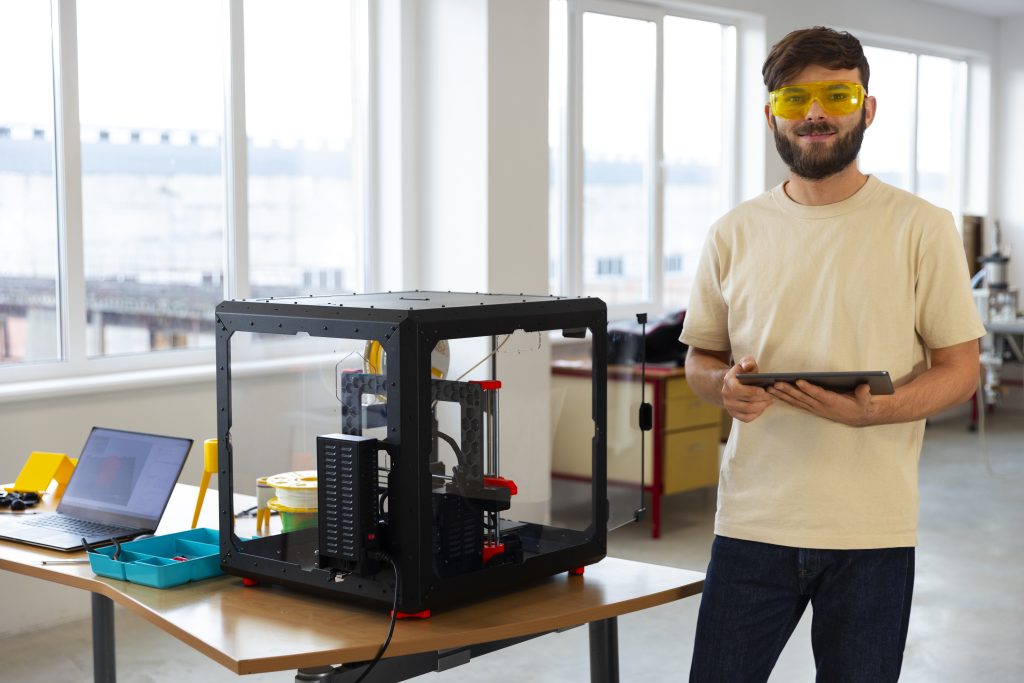
Trends Shaping the Future of Real Estate
Welcome to a glimpse into the future of real estate construction! In this article, we will explore the innovations and trends that are shaping the property construction industry. From sustainable building materials to advanced automation, the world of real estate is undergoing a remarkable transformation.
Benefits of Adopting Innovative Construction Trends
The adoption of innovative construction trends offers numerous benefits to developers and homeowners alike. One of the key advantages is the reduced environmental impact achieved through sustainable building practices and the use of eco-friendly materials. By incorporating these practices, developers can create properties that are not only aesthetically pleasing but also promote energy efficiency and preserve natural resources.

In addition to environmental benefits, innovative construction techniques also improve the overall living experience for residents. For instance, the integration of smart home features and Internet of Things (IoT) devices enhances convenience, security, and energy efficiency. Homeowners can control various aspects of their properties, such as lighting, temperature, and security systems, through their smartphones or voice commands.
Furthermore, the use of advanced technology and automation streamlines construction processes, resulting in cost savings and timely completion of projects. By embracing these innovations, developers can enhance their competitiveness in the real estate market while providing high-quality properties to buyers.
Sustainable Building Practices and Eco-Friendly Materials
The adoption of sustainable building practices and the use of eco-friendly materials have become key priorities in the property construction industry. With a growing emphasis on environmental sustainability, developers are turning towards renewable resources and materials with minimal carbon footprint.
One of the most notable trends in sustainable building is the use of recycled and reclaimed materials. For instance, reclaimed wood from older structures can be repurposed for flooring, furniture especially living room sofas, and decorative elements, giving properties a unique and eco-friendly touch. Additionally, recycled steel and concrete are gaining popularity due to their durability and reduced environmental impact compared to traditional materials.

Another innovative practice is the integration of energy-efficient systems into buildings. This includes the use of solar panels for renewable energy generation, smart lighting systems that automatically adjust based on natural light levels, and efficient insulation materials to reduce energy consumption for heating and cooling.
The incorporation of green roofs and walls is yet another trend gaining traction in property construction. These features not only provide aesthetic appeal but also offer insulation, absorb rainwater, and improve air quality. Green roofs and walls contribute to urban green spaces, promote biodiversity, and combat the urban heat island effect.
By adopting sustainable building practices and using eco-friendly materials, developers can create properties that are not only environmentally responsible but also offer long-term cost savings for homeowners.
Technology-Driven Construction Methods
The rapid advancements in technology have revolutionized the property construction industry. From virtual reality tools to drones, these innovations are making construction processes more efficient, cost-effective, and timely.
Virtual reality (VR) has emerged as a powerful tool in property construction. It allows developers to create immersive virtual experiences for potential buyers, enabling them to virtually tour properties, visualize different design options, and make informed decisions. VR technology eliminates the need for physical showrooms and reduces the time and cost associated with traditional property viewing.

Drones, equipped with high-resolution cameras, are being used for site inspections and monitoring during the construction phase. They provide a bird’s eye view of the site, allowing developers to identify potential issues, track progress, and ensure adherence to construction plans. Drones also improve safety by reducing the need for workers to access hazardous areas.
Building information modeling (BIM) is another technology-driven method that enhances collaboration and efficiency in property construction. BIM software enables stakeholders to create, manage, and share digital representations of the physical and functional characteristics of a building. This streamlines the design, planning, and construction processes, minimizing errors and delays.
Prefabrication and modular construction methods are also gaining popularity due to their efficiency and cost-effectiveness. Prefabricated components, such as walls, floors, and roofs, are manufactured off-site and then transported to the construction site for assembly. This approach reduces construction time, minimizes waste, and allows for greater precision in design and quality control.
These technology-driven construction methods not only improve productivity but also enable developers to deliver high-quality properties within shorter timeframes, meeting the demands of a rapidly evolving real estate market.
3D Printing in Construction
3D printing, also known as additive manufacturing, is revolutionizing the construction industry by offering new possibilities in design, customization, and cost-efficiency. This innovative technology involves creating three-dimensional objects layer by layer, using materials such as concrete, plastic, or metal.
One of the key advantages of 3D printing in construction is the ability to create complex and customized shapes that would be difficult to achieve using traditional methods. This opens up opportunities for architects and designers to explore innovative and unique designs, pushing the boundaries of creativity.
 The use of 3D printing also reduces material waste and construction costs. The precise layer-by-layer deposition of materials minimizes the need for excess materials, resulting in less waste. Furthermore, the ability to print on-site eliminates the transportation costs associated with traditional construction methods.
The use of 3D printing also reduces material waste and construction costs. The precise layer-by-layer deposition of materials minimizes the need for excess materials, resulting in less waste. Furthermore, the ability to print on-site eliminates the transportation costs associated with traditional construction methods.
Another significant benefit of 3D printing is its potential for affordable housing solutions. By automating the construction process and reducing labor requirements, 3D printing offers a cost-effective alternative to traditional construction, making housing more accessible and affordable.
While 3D printing in construction is still in its early stages, it holds immense potential for transforming the industry, enabling faster construction, reduced costs, and increased design flexibility.
Smart Homes and Internet of Things (IoT) Integration
The increasing demand for smart homes is driving the integration of Internet of Things (IoT) devices and home automation systems into new construction projects. IoT refers to the network of interconnected devices that can communicate and exchange data, enabling automation and remote control of various aspects of a property.
Smart home features offer convenience, security, and energy efficiency, making properties more attractive to buyers. Homeowners can control lighting, temperature, security systems, and even appliances through their smartphones or voice commands. This level of automation enhances comfort and convenience, allowing residents to customize their living environment according to their preferences.
Energy efficiency is a key focus in smart homes. IoT devices can monitor and optimize energy consumption, ensuring that resources are used efficiently. For example, smart thermostats can learn occupants’ preferences and adjust temperature settings accordingly, reducing energy waste. Smart lighting systems can automatically turn off lights in unoccupied rooms, further reducing energy consumption.

Green Building Certifications and Energy-Efficient Design
Green building certifications and energy-efficient design play a vital role in promoting sustainable practices and reducing the environmental impact of properties. Several globally recognized certification systems, such as LEED (Leadership in Energy and Environmental Design) and BREEAM (Building Research Establishment Environmental Assessment Method), provide guidelines and standards for sustainable construction.
These certifications evaluate various aspects of a property, including energy performance, water efficiency, indoor environmental quality, and materials selection. Developers who achieve green building certifications demonstrate their commitment to environmental responsibility and provide assurance to buyers that their properties meet stringent sustainability criteria.
Energy-efficient design focuses on minimizing energy consumption and maximizing natural resources. This includes optimizing insulation, utilizing natural light and ventilation, and integrating renewable energy sources. Energy-efficient design not only reduces operational costs for homeowners but also contributes to reducing carbon emissions and combating climate change.
Developers are increasingly recognizing the importance of green building certifications and energy-efficient design in attracting environmentally conscious buyers. By incorporating these practices, they can differentiate their properties in the market and contribute to a more sustainable future.
Future Trends in Property Construction
As technology continues to advance and sustainability becomes increasingly important, several exciting trends are expected to shape the future of property construction.
One emerging trend is the use of advanced materials, such as self-healing concrete and transparent solar panels. Self-healing concrete has the ability to repair cracks on its own, increasing the durability and lifespan of structures. Transparent solar panels, on the other hand, can be integrated into windows and facades, harnessing solar energy without obstructing views.
Another future trend is the development of energy-positive buildings. These structures generate more energy than they consume, making them net contributors to the electrical grid. Energy-positive buildings utilize renewable energy sources, advanced insulation, and energy-efficient systems to achieve this feat, further reducing carbon emissions and dependence on fossil fuels.
The concept of circular economy is also expected to gain prominence in property construction. Circular economy principles advocate for the reuse, recycling, and repurposing of materials, minimizing waste and promoting resource efficiency. Developers will increasingly focus on designing properties with a lifespan beyond their initial use, enabling easy disassembly and material recovery for future projects.
Additionally, the integration of artificial intelligence (AI) and machine learning is set to transform property construction. AI-powered systems can analyze vast amounts of data to optimize building design, predict maintenance needs, and enhance energy efficiency. Machine learning algorithms can learn from patterns and make informed decisions, enabling autonomous construction processes and reducing human error.
Conclusion
The future of real estate construction is filled with exciting innovations and trends that are reshaping the industry. From sustainable building practices to advanced technology-driven methods, developers are embracing these changes to create properties that are environmentally responsible, energy-efficient, and technologically advanced.
By adopting innovative construction trends, developers can reduce their environmental impact, enhance the living experience for residents, and increase their competitiveness in the market. From sustainable building materials to home automation systems, these trends offer numerous benefits for both developers and homeowners.
As technology continues to evolve, we can expect further advancements in construction methods, materials, and design. The future of property construction holds immense potential for creating sustainable, efficient, and intelligent buildings that meet the evolving needs of residents and contribute to a greener future.